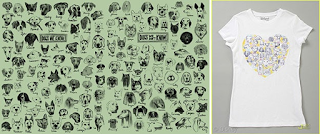The Associated Press vs. Fairey
8. The Associated Press vs. Fairey
Famous street artist Shephard Fairey created the Hope poster during President Obama’s first run for presidential election in 2008. The design rapidly became a symbol for Obama’s campaign, technically independent of the campaign but with its approval.
In January 2009, the photograph on which Fairey allegedly based the design was revealed by the Associated Press as one shot by AP freelancer Mannie Garcia with the AP demanding compensation for its use in Fairey’s work. Fairey responded with the defense of fair use, claiming his work didn’t reduce the value of the original photograph.
The artist and the AP press came to a private settlement in January 2011, part of which included a split in the profits for the work.
Though there wasn’t a court case and an actual verdict, this case created a lot of discourse around the value of work in these copyright battles. It’s unlikely that Garcia’s work could have ever reached the level of fame it did, if not for Fairey’s poster. Garcia himself stated he was “so proud of the photograph and that Fairey did what he did artistically with it, and the effect it has had,” but still had a problem with the fact that Fairey took the image without permission and without credit for it’s originator.
Credit, credit, credit! On 99designs you cannot use licensed work but in the right circumstances you can use stock imagery. When doing so, make sure everyone knows the source.
Mr. Fairey, who sued The Associated Press in 2009 as it began to accuse him of copyright infringement for using one of its photographs as the basis for the poster, said that he did not appropriate any copyrightable material and that his use of the photograph, which showed Mr. Obama looking up pensively, constituted fair use under copyright law.
Last year Mr. Fairey admitted that he had misstated which A.P. photo he had used for the Obama image and that he had submitted false images and deleted others to conceal his actions, leading to a criminal investigation in addition to the civil case. Mr. Fairey originally said that he had used a photograph from an April 27, 2006, event at the National Press Club in Washington, where Mr. Obama was seated next to the actor George Clooney. Instead, the photograph he used was from the same event, but was a solo image of Mr. Obama’s head. The photograph was taken by Mannie Garcia for The A.P.
Mr. Fairey said that he had initially believed that The A.P. was wrong about which photo he had used, but later realized that the agency was right.
In settling the civil lawsuit, “The A.P. and Mr. Fairey have agreed that neither side surrenders its view of the law,” The A.P. said in a statement on Wednesday. “Mr. Fairey has agreed that he will not use another A.P. photo in his work without obtaining a license from The A.P. The two sides have also agreed to work together going forward with the ‘Hope’ image and share the rights to make the posters and merchandise bearing the ‘Hope’ image and to collaborate on a series of images that Fairey will create based on A.P. photographs.” The statement added that the two sides had agreed to “financial terms that will remain confidential.”
In a statement released by The A.P., Mr. Fairey said: “I respect the work of photographers, as well as recognize the need to preserve opportunities for other artists to make fair use of photographic images.” Contacted through his publicist, Mr. Fairey declined to say anything more.
A separate copyright infringement lawsuit against Obey Clothing, which makes T-shirts and other apparel with the ‘Hope’ image, has not been settled and remains in court, The A.P. said.
Because of the issues at stake and the high visibility of the parties involved, the case had shined a spotlight on the tricky legal issues surrounding the fair-use exceptions to copyright protections. One of the central questions was whether Mr. Fairey’s creation, which became ubiquitous on street corners and T-shirts during and after Mr. Obama’s campaign, constituted a “transformative” use of the photograph, a use that is allowed under the law so that creative expression is not stifled.
Mr. Fairey, 40, has become one of the best-known practitioners of a guerrilla-style street art that emerged from the graffiti scene but has expanded well beyond paint to include a wide variety of techniques and materials. Mr. Fairey made his name plastering buildings with fake-advertising stickers and posters showing an ominous, abstracted image of the wrestler André the Giant along with the word “Obey.”
He decided to create the “Hope” poster after encouragement by the Obama campaign, which welcomed it but never officially adopted it because of the very copyright concerns that later erupted. Mr. Fairey has maintained that he has never personally profited from sales of the image, a contention The A.P. has disputed.
A collaged work made by Mr. Fairey based on the poster was acquired in early 2009 by the National Portrait Gallery in Washington, part of the Smithsonian Institution, and is now in its permanent collection, along with portraits of George Washington by Gilbert Stuart, and Richard M. Nixon by Norman Rockwell.



Comments
Post a Comment